
Wood firing is the top skill in traditional Chinese Tenmoku firing.
Wood firing is seen as an art of "the five elements alternating and the unity of heaven and man" in the eyes of modern artists.
Wood firing is the perfect combination of firing skills and the natural formation process of Tenmoku, pursuing a natural and perfect result.

Wood firing is a test of the experience and expertise of the firing craftsman, which cannot be handled by ordinary pottery makers.
- Seasonal selection for wood firing in Dragon Kiln.
Dragon Kiln wood firing cannot be done at any time. During the Song Dynasty, the first half of the year at the Jian Kiln site in Houjing Village and Chizhong Village in Jianyang City, Fujian Province was reserved for making clay bodies and air-drying them, with no firing taking place. Modern Dragon Kiln firing follows a similar schedule. Generally, after the rainy season in June and avoiding humid periods, the kiln is opened and fired only when the ground moisture has dissipated.
The kiln firing must be finished before the end of December in the lunar calendar. Even during this period, firing must be avoided on rainy days to prevent excessive humidity from causing the entire kiln to be scrapped. A single Dragon Kiln wood firing takes over 70 hours, lasting for three days and three nights. The firing craftsman must make temporary adjustments based on changes in weather, temperature, and other factors according to their experience.
- Material selection for wood firing in Dragon Kiln.
Any ceramic product fired in a Dragon Kiln using firewood as fuel can be called wood fired. It is an ancient firing method, and wood is the primary fuel for kiln firing. When firing porcelain, the kiln is covered, and the porcelain body is separated from the wood ash and fire to avoid direct contact, ensuring the consistency of the glaze color and appearance.
The success or failure of wood fired Tenmoku products depends on the relationship between the clay, fire, firewood, and the Dragon Kiln.
- Clay

The porcelain clay and glaze used for firing Tenmoku must be excavated from designated areas rich in iron oxide. Then, after processes such as screening, crushing, aging, kneading, and molding, the clay is shaped, dried, bisque-fired, selected, washed, glazed, dried, loaded into the kiln, and finally wood fired.
- Firewood

The firewood used for wood firing is usually left to stand for at least three to six months, avoiding excessive moisture and being suitable for combustion. Pine wood is the best choice for firewood. During kiln firing, the kiln master usually leans the firewood against the kiln wall, using the kiln temperature to help dry it out.
- Dragon Kiln Shuiji Dragon Kiln Site in Jianyang
Dragon Kilns are built along the mountainside, usually as semi-underground structures. A sloping trench is excavated along the mountainside, and a long rectangular kiln is built, resembling a slanting dragon in appearance, hence the name "Dragon Kiln." Kiln firing usually takes three to five days, during which firewood must be constantly added in shifts without interruption. The speed and method of adding firewood, weather conditions, and air flow rate all affect the color changes of the products inside the kiln.
- Xiá bō (lid and bowl set) Xiá bō (lid and bowl set) used for firing Tenmoku.
During the late Tang Dynasty and Five Dynasties period, the Jian Kiln used a stacking method with supports, exposing the ware in the kiln, and then used a Xiá bō (lid and bowl set). During the Northern Song Dynasty, changes in the building materials of the Jian Kiln increased the strength and sealing of the kiln, and the "upright firing method with a funnel-shaped Xiá bō" was adopted. This involved placing glazed bowls and cups in the Xiá bō, ensuring even heating both inside and outside the Tenmoku during high-temperature firing.
- The kiln blessing ceremony for wood firing in Dragon Kiln.
In ancient times, wood firing usually involved a sacred and grand kiln blessing ceremony, expressing the craftsman's respect for the kiln god and praying for the kiln god's blessings to ensure a smooth firing process.
During the kiln blessing ceremony, everything appears solemn and quiet.
Following the tradition of Jian Kiln potters, they prepare incense, candles, paper money, and various rich offerings to worship the kiln god. The craftsmen stand solemnly beside the wood kiln, holding incense in their hands, waiting for the auspicious moment of the kiln blessing ceremony.
"The auspicious moment has arrived, let's begin the kiln blessing ceremony, light the fire!" One of the craftsmen says. The craftsmen then bow to the Dragon Kiln as a gesture of respect, and the firing officially begins. From then on, everything is left to the flames burning fiercely inside the kiln to complete the firing process.
- The firing process for wood firing in Dragon Kiln.
Tenmoku from the Jian Kiln is fired in the reducing flame of the Dragon Kiln.
- Loading the kiln.
Loading the kiln is crucial for wood firing in Dragon Kiln. Based on the total number of pieces and the capacity of the kiln, the placement of each piece is carefully designed to ensure that each piece achieves the desired effect. In ancient China's orthodox porcelain production standards, any trace of ash falling on the glaze or fire marks on the body was not appreciated, and was considered as "flaws." In traditional firing, before loading the kiln, the Jian Kiln workers must first place the bisque-fired Tenmoku one by one into the Xiá bō to avoid direct contact with flames and kiln ash. Then, they plan and communicate the layout of the kiln positions.
Kiln loading starts from the first stack, usually with three stacks. The size and height of the pine wood used in the stacking are designed based on the kiln's characteristics, direction of flame and ash fall, and the desired effect of the products. The last stack's position is the most crucial as it receives more ash and flames, leading to better results, but also higher risks. Therefore, careful consideration is essential in arranging the last stack's position. The entire kiln loading process is challenging and requires careful and meticulous design. The area about one meter in front of the loaded kiln is used for stacking firewood. After all the processes are complete, the firing process begins.
- Kiln watching.
The kiln door has an observation hole where test pieces can be placed to observe the degree of firing. After sealing the kiln and lighting the fire, the kiln must burn continuously, and the temperature gradually rises over time. It takes about 10 hours for the kiln temperature to reach around 1300 degrees. Afterward, firewood is added continuously from the front of the kiln to the back through the firing holes. Experienced kiln masters need to personally watch the fire and closely monitor the firing process. After three to five days of firing, the kiln is sealed. At this time, the oxygen in the kiln rapidly decreases, creating a reducing atmosphere that brings unexpected effects to the Tenmoku inside the kiln. In the later stages of sealing the kiln, the kiln temperature slowly drops to room temperature, which takes about a week.
- Unloading the kiln.
The kiln is unloaded three days after the kiln is sealed and the fire is extinguished. The unpredictability of wood firing determines that each piece is unique. The patterns on the surface of the Tenmoku are much finer and smoother than those made by modern electric or gas firing techniques. The colors are vivid and rich, revealing a stunning beauty in simplicity.


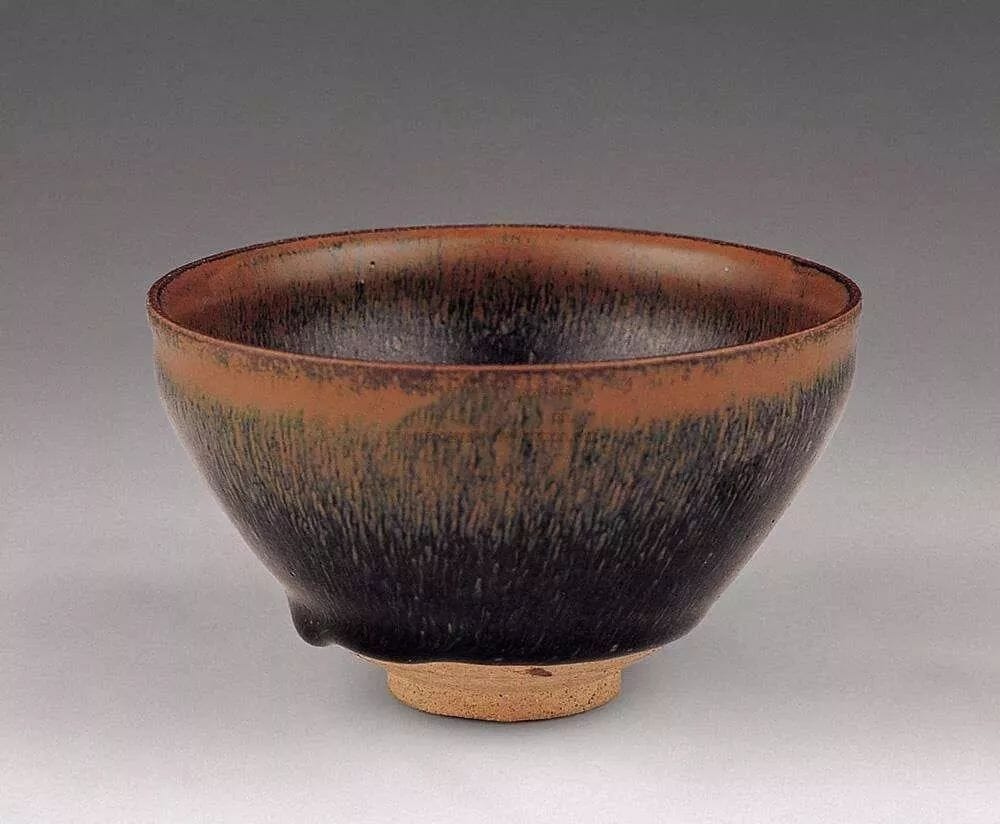

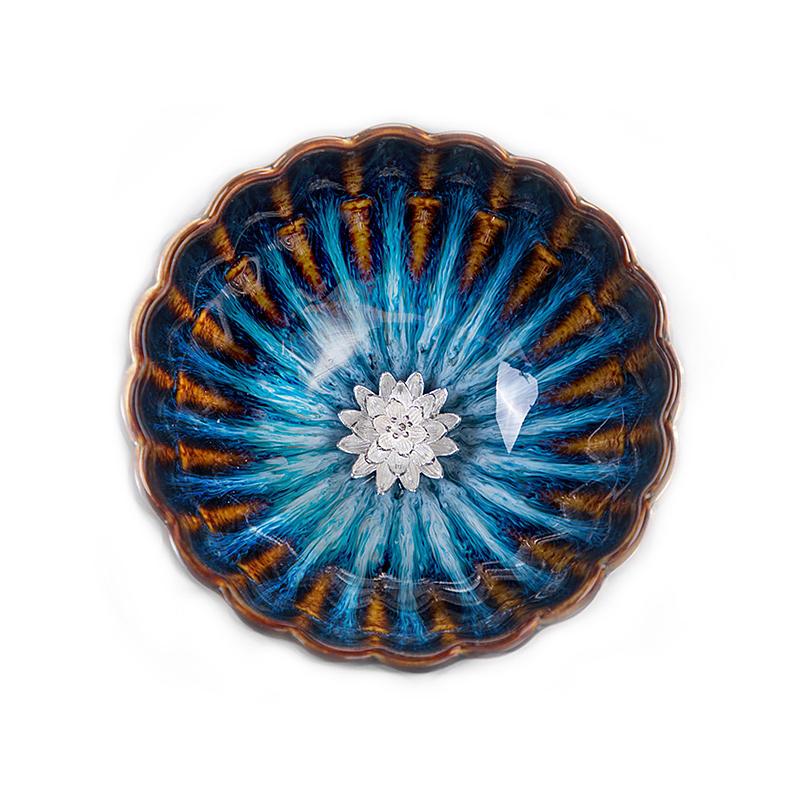
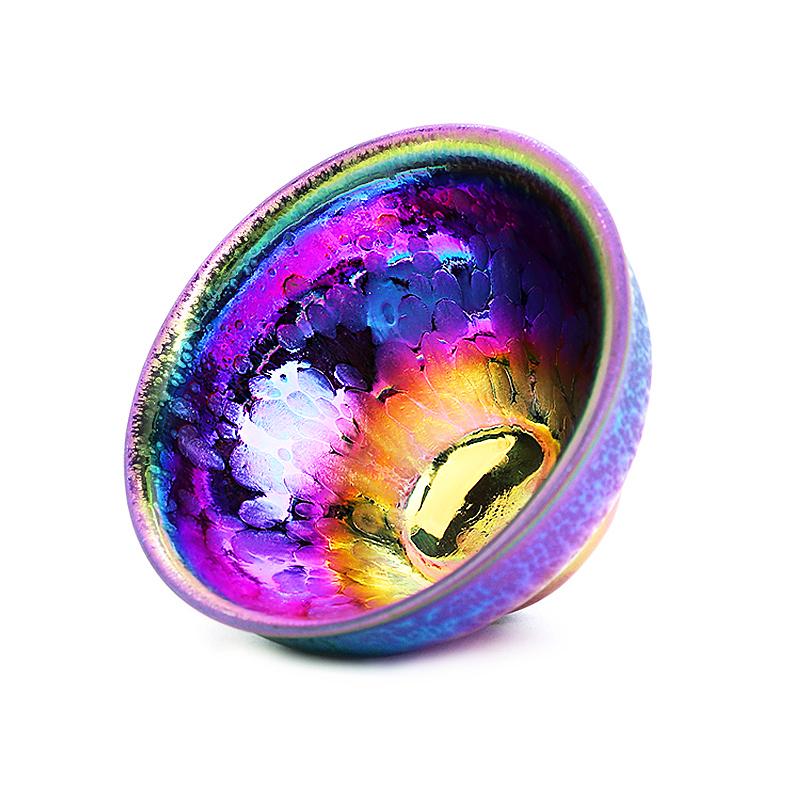
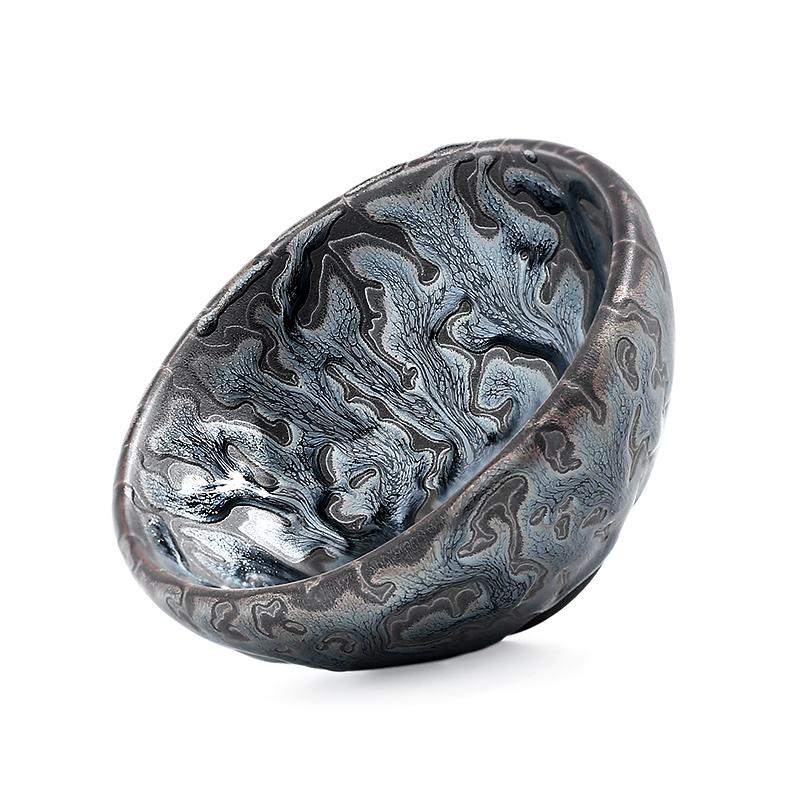
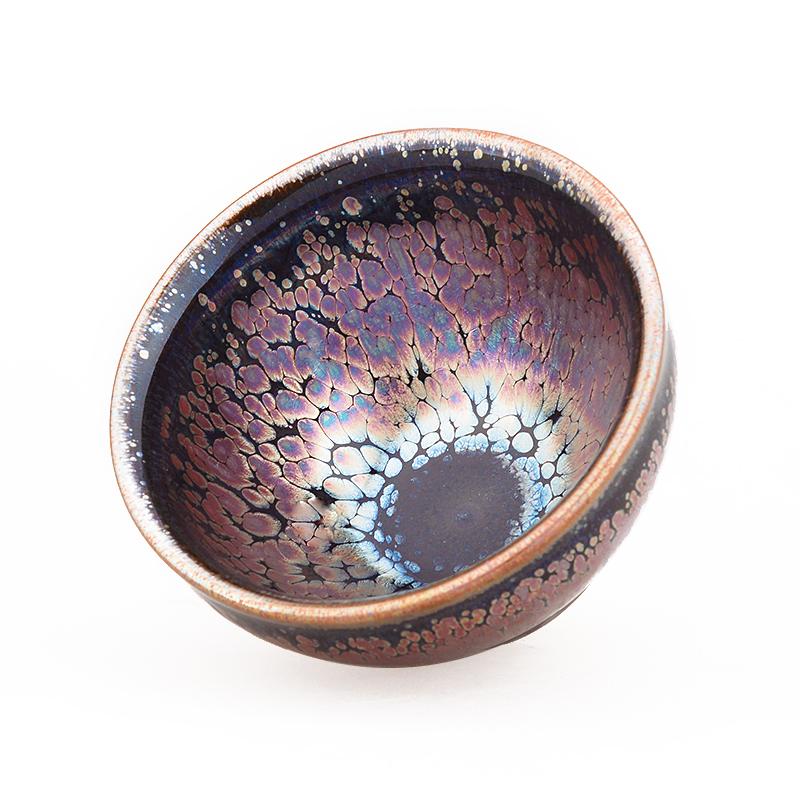
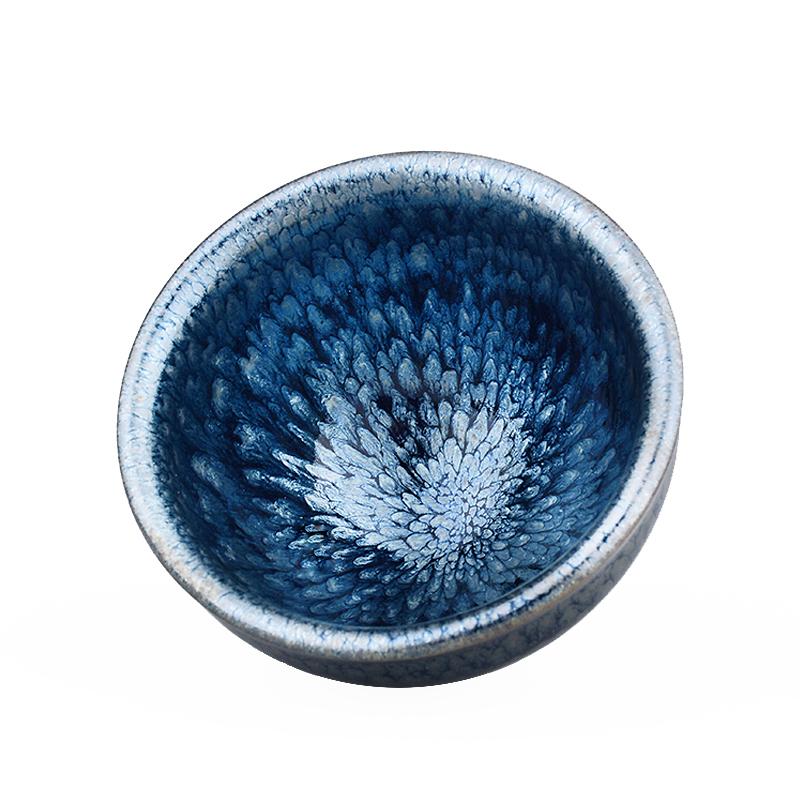
Share:
With so many tea cups available, why do people prefer to use Tenmoku?
Origins of Partridge Feather Spot Tenmoku: One-Glance Characteristics